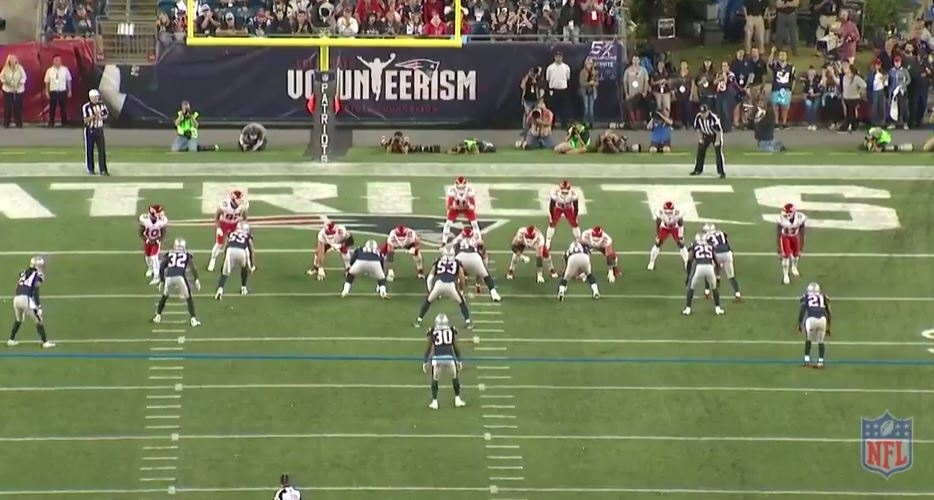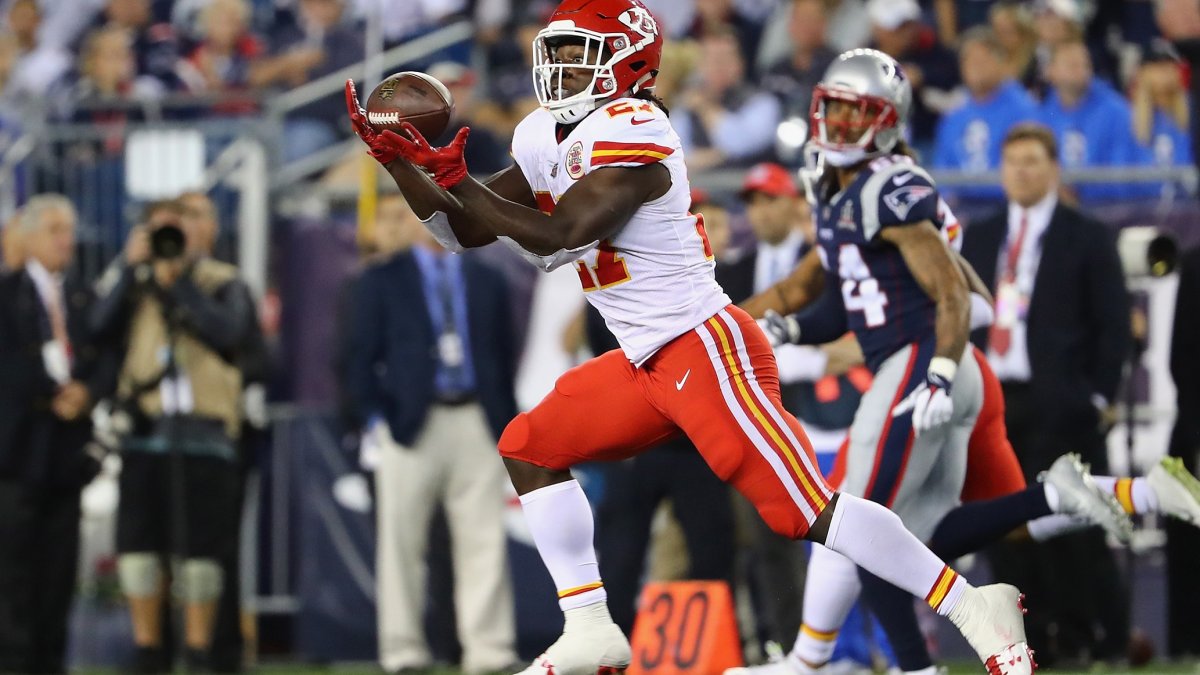If I would have predicted prior to opening night that an Alex Smith-led Kansas City Chiefs offense would travel to Foxboro and score more points than any offense ever has against a Bill Belichick-led Patriots team, I would have been fired before the prediction even came to fruition. That’s how crazy last Thursday night’s 42-point offensive explosion was from Kansas City.
There were two main schematic tenets of the New England Patriots defense that Kansas City knew would be coming and game planned heavily for: 3-man/mush rushes and Bear fronts. Those don’t necessarily jump off the page at you, but how the Chiefs handled each was the difference in the game. Let’s take a look at why that was the case.

Three-Man Rushes
When studying the 2016 Patriots defense, their extensive use of three-man rushes is by far one of their most interesting quirks. They implemented them on 26 percent of opposing quarterback dropbacks last year. No other team was above 20 percent and the majority of teams were under 10 percent. In a league where the importance of getting after the quarterback seems to be rising every day, the Patriots have gone the opposite way. The result is they absolutely shut down most screens and quick passing games – a.k.a the Chiefs’ 2016 offense.
Last Thursday the Pats game plan was no different. They rushed three on 12 of Alex Smith’s 40 dropbacks. Even when they did bring four, they’d often jam tight ends or mush rush (play contain) their edge defenders as the Pats are coached to maintain rush lanes as strictly as any team in the NFL. The Chiefs game plan on the other hand was the complete opposite of 2016. The quick hitting, screen heavy Chiefs turned into a downfield passing attack overnight.
The half-back wheel/post route – Kareem Hunt’s long score – is a slow developing pass play. The out and up – Tyreek Hill’s 75-yard touchdown – is a slow developing call. The hitch/wheel – Chris Conley’s 25-yard catch late in the fourth quarter – is a slow developing call. This is surely not the Chiefs offense Belichick expected to be facing. Last season, Smith averaged the quickest time to throw in the NFL at 2.23 seconds. Only 32 percent of his pass attempts took more than 2.6 seconds. Last Thursday night he averaged 2.83 seconds to throw and 56.4 percent of his passes came after 2.6 seconds. On those 12 three man rushes, the Chiefs averaged 8.1 yards per play and 3.6 seconds to throw. It was a different offensive philosophy altogether and to say the Patriots weren’t ready for it is an understatement.
Bear Fronts
The Bear Front is another holdover from 2016 for the Pats. They used it extensively to stymie any team looking to run the ball downhill. In the front a nose tackle plays head up over the center and is asked to control both A gaps while two defenders line up over the outside shoulders of the guards and fill both B gaps. Basically any run concept that wants to hit between the tackles is going to have a world of trouble getting any space with three defensive linemen clogging it up. Here’s what it looks like in action:

On Thursday, 49 out of the Pats 68 defensive snaps came from a bear look (not including kneel downs). The Chiefs responded by either stretching those three down linemen laterally or skirting them altogether. Last season 20 percent of their rushing attempts were some form of inside zone. 10 percent were downhill gap runs. On Thursday, they didn’t run a single one of either. Two concepts dominated the Chiefs run calls: outside zone and the power-read. The power-read is used far more extensively at the college level – most famously by Pittsburgh repeatedly in their upset of Clemson last season – and was certainly a wrinkle the Pats likely hadn’t expected. The running back tracks to the edge while the blocking sets up for the quarterback to hit off the tackle, leaving the interior linemen’s gaps untouched.
— Mike Renner (@PFF_Mike) September 14, 2017
Where they really made hay against the Pats defense though was with their outside zone runs and variations off it. In outside zone, the gaps get stretched so wide that the 0-tech nose tackle who is supposed to take both A-gaps can’t realistically fill both. All it takes then is one cutoff block – like Eric Fisher on Malcom Brown below – and all of a sudden there’s a crease.
— Mike Renner (@PFF_Mike) September 14, 2017
Now at the end of the day, the offensive line still has to execute their blocks. Eric Fisher, Bryan Witzmann, Mitch Morse, Laurent Duvernay-Tardif, and Mitchell Schwartz deserve considerable credit for their work against a tough run-stuffing front. The scheme put them in an optimal position to succeed though and that’s why the Chiefs pulled off what many thought was impossible.



 © 2025 PFF - all rights reserved.
© 2025 PFF - all rights reserved.